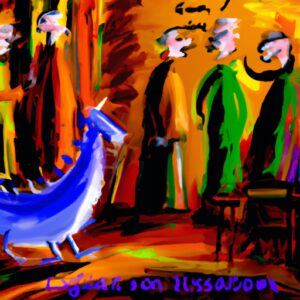What is the imperfect subjunctive?
As discussed in previous lessons, the congiuntivo (subjunctive) is the mode of wish, thought, dream, hope, possibility, and doubt.
It’s usually preceded by the verbs credere (to believe), pensare (to think), volere (to want or wish), immaginare (to imagine), and sperare (to hope).
When it comes to the imperfect subjunctive, the main verbs that precede it might be in the present or the past.
We might also find the main verb in the present conditional (like vorrei che, mi piacerebbe che, sarebbe bello che, etc.) if we want to express a wish.
Have a look at the summary below:
- present + che + imperfect subjunctive: to express a present-past relationship.
- past + che + imperfect subjunctive: to express contemporaneity.
- present conditional + che + imperfect subjunctive: to express a wish.
How to conjugate regular verbs?
To form the imperfect subjunctive in Italian, you have to remove –are, –ere, and –ire from the infinitive (the base form of the verb) and add the correct endings, which are in bold in the table below.
You’ll notice the recurrence of the double “s”. This will help you learn their conjugation.
| Parlare | Vedere | Partire | |
| io | parlassi | vedessi | partissi |
| tu | parlassi | vedessi | partissi |
| lui/lei | parlasse | vedesse | partisse |
| noi | parlassimo | vedessimo | partissimo |
| voi | parlaste | vedeste | partiste |
| loro | parlassero | vedessero | partissero |
The following verbs that are usually irregular are regular in the imperfect subjunctive: avere, dovere, venire, volere, potere, sapere, and andare.
Now, make sure you pay attention to whether the main verbs in the following examples are in the present, the past, or the conditional.
Vorrei che tu venissi stasera.
I’d like you to come tonight.
Sofia pensa che loro capissero tutto.
Sofia thinks that they understood everything.
Mi sembra che lei avesse il rafreddore.
I think she had a cold.
Mi piacerebbe che tu parlassi sul serio.
I’d like you to talk more seriously.
Pensavo che loro andassero a casa più presto.
I thought they would go home earlier.
Practice with Quizlet
Here's a set of flashcards and quizzes to practice this grammar topic.How to conjugate irregular verbs?
The following verbs are irregular in the imperfect subjunctive: bere, dare, dire, and fare.
You’ll notice the recurrence of the double “s” again and that some verbs are more irregular than others (like the verb essere).
Here are their conjugations:
| Bere | Dare | Dire | Fare |
| io bevessi | io dessi | io dicessi | io facessi |
| tu bevessi | tu dessi | tu dicessi | tu facessi |
| lui/lei bevesse | lui/lei desse | lui/lei dicesse | lui/lei facesse |
| noi bevessimo | noi dessimo | noi dicessimo | noi facessimo |
| voi beveste | voi deste | voi diceste | voi faceste |
| loro bevessero | loro dessero | loro dicessero | loro facessero |
| io fossi | io stessi |
| tu fossi | tu stessi |
| lui/lei fosse | lui/lei stesse |
| noi fossimo | noi stessimo |
| voi foste | voi steste |
| loro fossero | loro stessero |
Let’s have a look at some examples:
Non pensavo che lei bevesse così tanto caffè.
I didn’t think she drank so much coffee.
Non credo che loro dessero tanta importanza a quello.
I don’t think they gave much weight to that.
Sinceramente pensavo che dicessi la verità.
Honestly, I thought you were telling the truth.
Lei vorrebbe che Mario fosse più aperto.
She’d like him to be more open-minded.
Mia mamma sperava che noi facessimo i compiti.
My mum hoped we would do our homework.
Credo che mio zio non stesse molto bene.
I think my uncle wasn’t feeling very well.










2 Responses
lui/lei desse – no?
E’ vero! L’ho corretto. Grazie!